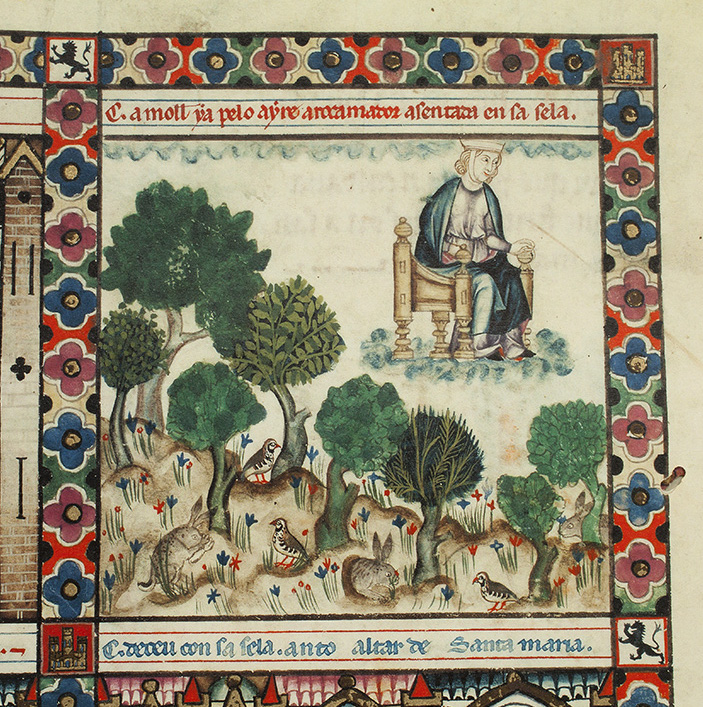

This blog post is the fifth in a series focusing on members of the Index staff. Today we introduce Pamela Patton.
What is your background and specialization?
I’m a medievalist who studies the visual culture of the Iberian Peninsula, a focus that began at Tufts University when my advisor Madeline Caviness pointed me toward the Pamplona Bibles as a research topic. I was fascinated, and still am, by the complexity of medieval Iberian culture and its historiography—the questions are constantly evolving. The decision served me well: after doing grad degrees at Williams College and Boston University, I was offered a fellowship at Southern Methodist University in Dallas, which then evolved into a split curatorial and faculty position in “Spanish Art.” Although I shifted out of curatorial work after tenure, as a professor at SMU I was able to develop several courses on medieval Iberia as well as other aspects of the Middle Ages. Since coming to the Index in 2015, I’ve continued to research and occasionally teach medieval Iberian things, and I’m always happy to pitch in on cataloging works of art from Spain for the database. After 30+ years in the field, I do occasionally wonder if I should wander into some other part of the world, but then some great new Iberian question turns up, and back I go.
What research projects are you working on currently?
I’ve just wrapped up a project on how skin color and stereotype were used in thirteenth- and fourteenth-century Iberia to signal racial, social, and cultural difference, and that’s inspired me to think further about the role of improvisation generally in Gothic manuscript illumination, specifically in the illustrated manuscripts of the Cantigas de Santa María, which were made for Alfonso X of Castile in the late thirteenth century. Illustrating the four hundred songs that were to be included in those two manuscripts must have been a massive task, and the artists met the challenge with some highly inventive iconography—giant silkworms, flying chairs, dancing pork chops, and the like. They must have had considerable latitude, in addition to a wonderful imagination!

What do you like best about working at Princeton?
Princeton does things for real. Very few universities so effectively hold teaching and research at their core, not to mention committing the resources that help them happen. As Index director, I especially appreciate the openness to new ideas, the support for scholarly initiatives, and the extraordinary research resources. These things don’t happen by themselves; they take investment at the highest level. On a more personal note, I’m grateful every day that when I go to work I have the opportunity to hear and share ideas with so many bright, thoughtful people, both in the Index and throughout campus, and in such a beautiful place. It’s a fine reason to get up in the morning.
What travel experience played a role in your becoming an art historian?
My mother had always wanted to travel, and when I was a child she and my father twice managed to put aside enough money to take the whole family to Europe. Remember Arthur Frommer’s Europe on $10 a Day? My mother really did that. I loved visiting all the art museums and historic sites, but I think reading The Hobbit on the train between cathedral towns in England was probably what made me a medievalist. The line between history and fantasy obviously was very blurry for me then, but somehow I became absolutely certain I wanted to learn more about this stuff. Corny, okay, but give me a break—I was eleven.
What do you like best about being back on campus in person?
People and books. I really missed the easy discourse that comes with sharing a coffee, talking over a research question, or listening to Q&A after a lecture. Ideas flow so much more freely when you’re in person and the moment has your full, active attention. And there is nothing more inspiring than walking into the library stacks to find the physical book you need: the excitement of spotting and opening it; the anticipation of what you’ll find in its pages; the serendipity of seeing what else is on that shelf. And the lights! I really like how the lights in Firestone brighten gradually when you walk into an individual aisle. It’s as if the light bulb that’s about to go off in your head is already going off all around you.
Coffee or tea?
Yes, please, all of it. I would drink coffee all day if I could, especially if it’s the cortados that I got hooked on during dissertation research in Spain. But to spare my co-workers a jittery colleague, in the afternoon I usually segue into tea, ideally a nice green jasmine.